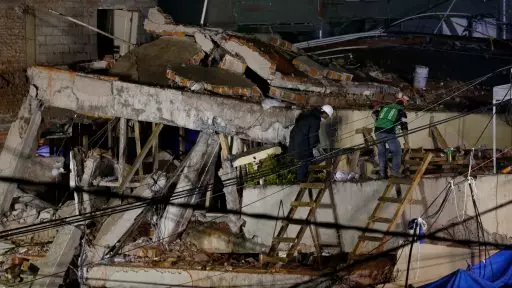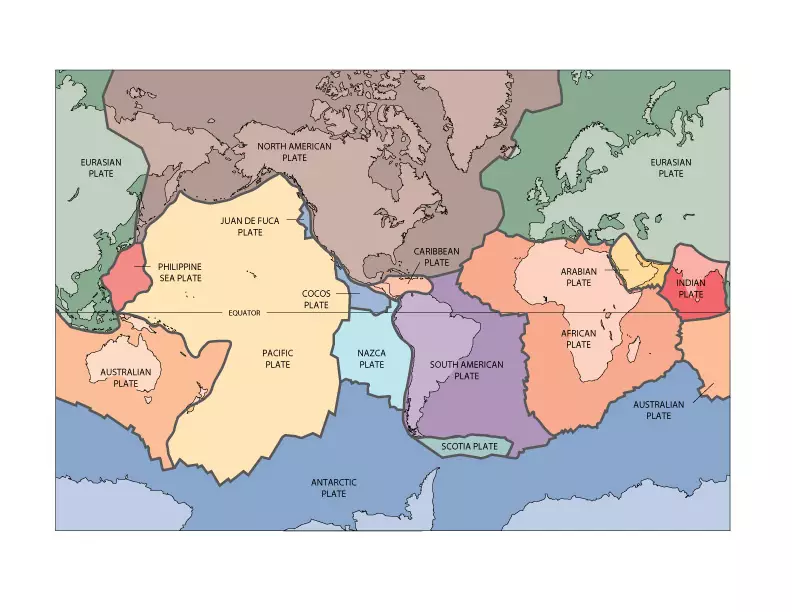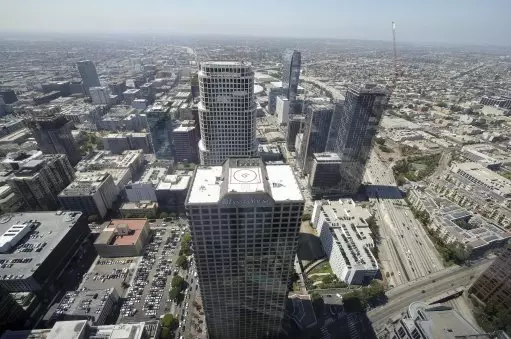
Over the last week, two earthquakes have hit Mexico and the second has killed more than 200 people in the country's capital.
Two more tremors have since hit New Zealand, although thankfully with less damage.
Four earthquakes in as many days may seem concerning, especially when you add into the mix the recent number of hurricanes that have battered the Caribbean and the south coast of America.

Credit: PA
However, Ekbal Hussain, a research scientist at the University of Leeds' Institute of Geology and Tectonics, told LADbible that these are all coincidental.
He said: "We should not be worried, earthquakes are random. The increasing concern for us is that big cities that are growing in earthquake-prone regions.
"We can't stop earthquakes, but we can understand how buildings and people respond to them. Particularly in central Asia, where there are huge mega-cities with populations of more than 10 million people. When you get a big earthquake in those regions it can cause a lot of damage and kill a lot of people.
"From an engineer's point of view, we understand how to live with earthquakes pretty well. They are good at designing buildings and bridges to withstand shaking.
"We don't need to predict earthquakes to live with them. We need to have proper governance, proper building plans and proper risk management in place. Then we can live with them.
"Japan has more than 600 earthquakes every year and very few people die in them. That's mainly because they have good plans, good buildings and good governance in place. If you have 600 earthquakes in places that don't have that, that's when many die, and they don't need to."
Advert
The British Geological Survey (BGS) noted that there have been 20 earthquakes in the last 10 years with a magnitude of 6.5 or above, within a 200km radius of Mexico City. The country resides on one of the most active plate boundaries in the world.
For reference, each order of magnitude measurement is 10 times bigger than the previous. So, for example, an earthquake measuring a magnitude of seven, is 10 times the power of one measuring as six.
Ekbal claims that, 40 or 50 years ago, an earthquake in New Zealand would not have bothered people in the UK.
He added that the earthquakes were random in Mexico and New Zealand. They both sit on different plates and a release of seismic energy is the result of decades of built-up tension, sometimes even centuries or millennia.

Mexico sits on the border of three plates. Credit: USGS.gov
"When this tension reaches critical point, it releases all that energy in what we know as an earthquake," Ekbal explained.
"We don't like the word predictions because it has all manner of negative connotations, but we are comfortable with the word forecasting and early warnings."
When an earthquake strikes it will release two types of wave. A P-wave is the early warning sign. To Ekbal, that's enough to give people warning to protect themselves. The second wave, the S-wave, is that one that causes the damage.
For the Mexico earthquake, the gap between the P and S wave was 18 seconds.
"It doesn't sound like a lot, but it's enough time to get outside into an open area or under a table. These kinds of systems are more and more common and they are absolutely critical," Ekbal said.
But in terms of one forecast, one area that should be concerned is Los Angeles. The city, along with the state of California, sits on the San Andreas fault.
The infamous fault last caused major damage to the city at the start of the 20th century but, according to Ekbal, it could release at any time.

Credit: PA
Ekbal said: "The Americans are very concerned about the San Andreas fault because a large portion of it, particularly to the south, near Los Angeles, hasn't ruptured in quite a long time.
"We don't like to use the word overdue, but there hasn't been one there in a long time, and it's due to rupture soon.
"There is going to be an earthquake there soon, we don't know when. Obviously, people in America are very concerned and what makes LA more vulnerable is that it sits on loose sediment, and most of the city is built on this. In an earthquake, like sand, it increases the shaking of a building.
"They have strict building codes and they are aware of the problem, and hopefully they are preparing for it, because it could happen.
"It could happen today, tomorrow, 10 years from now, 50 years from now. We just know that the energy is being stored along the fault and it must be released, you can't not release it.
"They are sitting on a loaded spring, waiting to go."
Featured Image Credit: PATopics: Earthquake, Mexico, Los Angeles, california